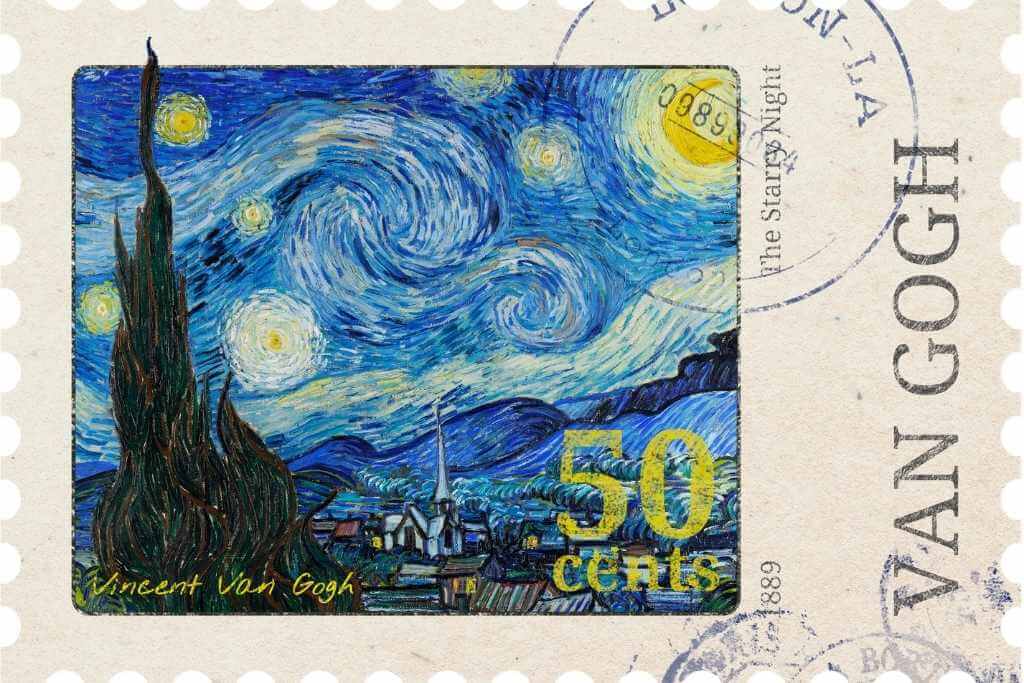Vincent Van Gogh is remembered today as one of the greatest post-impressionists. His paintings are well known for their raw honesty, vibrant colors, and beauty. Van Gogh’s most famous paintings are now worth millions of dollars. Here is a list of the top 10 most outstanding paintings by Van Gogh.
This, however, is a massive irony. Van Gogh felt like a failure his entire life. He only sold one painting, and art critics said his works were “rubbish” and that he should pursue another career! He died impoverished.
Van Gogh saw beauty where others saw ugliness.
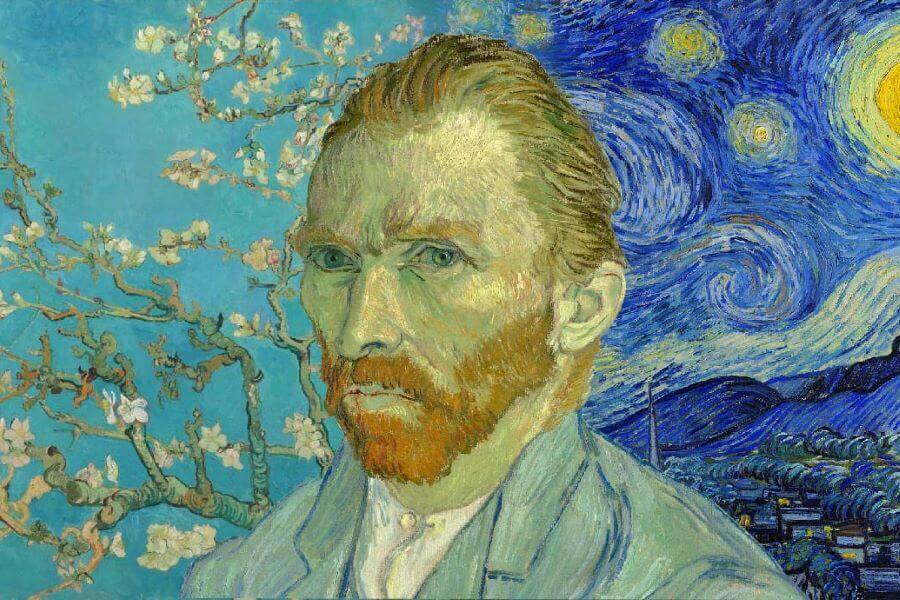
Van Gogh wanted to depict the lives of the poor and ordinary people throughout his artistic career. Others saw ugliness where he saw beauty. This topic was not well received. People preferred buying scenes of beauty and joy rather than poverty.
“I see drawings and paintings in the dirtiest huts and dirtiest corners.” Quote by Vincent Van Gogh
The art world did not understand his emotive use of bold colors and brisk impasto paint application. They even told him he couldn’t paint and should find another job!
Vincent’s brother Theo, on the other hand, had faith in his artistic abilities. Vincent’s brother, an art dealer, encouraged him to keep painting. Theo even paid Vincent a salary so he wouldn’t have to work and could continue to create art.
Theo was right. After both Vincent and Theo died, the beautiful artworks of Vincent Van Gogh gained recognition in the art world. Unfortunately, neither of them witnessed Van Gogh’s phenomenal success. Van Gogh’s artworks became universally celebrated and loved for their raw beauty and emotion.
Here are Top fascinating facts about Vincent van Gogh
1885: The Potato Eaters – famous paintings by Van Gogh
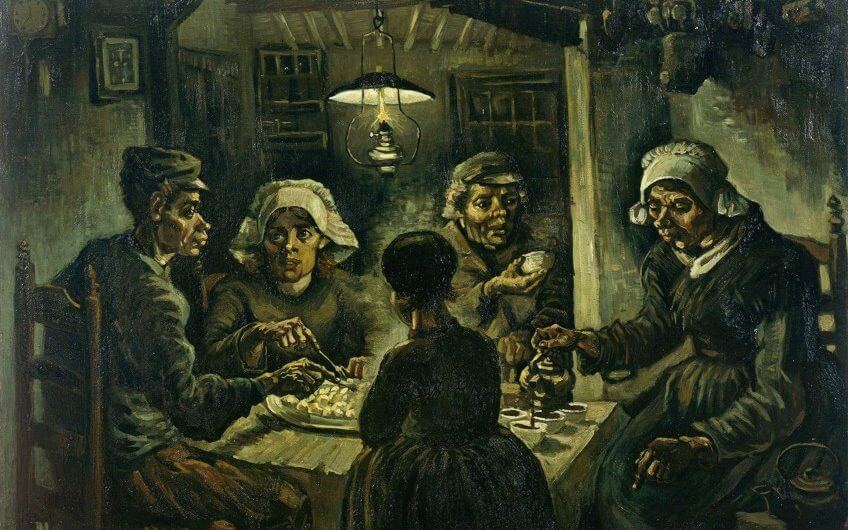
During his early years as an artist, Van Gogh completed The Potato Eaters in Nuenen in 1885. Rather than posing for the painting, he aimed to depict a village peasant family eating in their natural setting. Van Gogh meticulously planned this painting, hoping to exhibit it at the Salon de Paris. The Salon, however, rejected it, and the painting did not sell during Van Gogh’s lifetime.
This painting is now regarded as one of Van Gogh’s most admired masterpieces by the art world. Potato Eaters is on display at the Amsterdam Van Gogh Museum.
1889, Starry Night
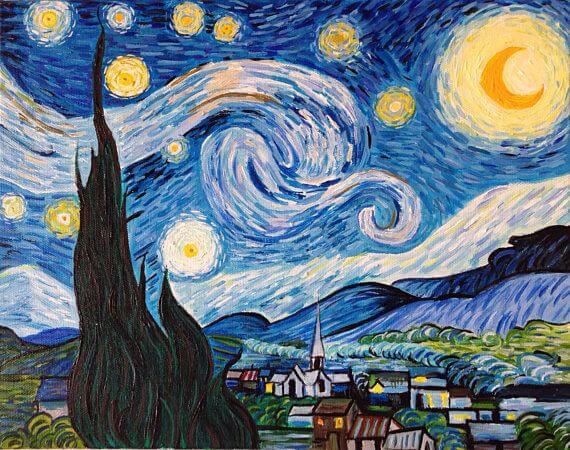
One of the most well-known paintings in the world is Van Gogh’s Starry Night. It has been printed on placemats, cards, posters, calendars, jigsaw puzzles, and other items. In a nutshell, EVERYTHING and ANYTHING.
Van Gogh created this iconic work while in a mental institution in Saint-Rémy-de-Provence. Despite the poor conditions, Van Gogh had more freedom than most of the other patients. Van Gogh was free to roam the asylum grounds and had an extra room to use as a painting studio.
The artist created this painting after suffering from a major mental breakdown and feeling suicidal. The swirls in the sky represent his emotional turmoil. Darker colors express his melancholy mood. The scene in this painting depicts views of Saint-Rémy-de-Provence seen from Van Gogh’s bedroom window. It is, however, a whimsical and emotional interpretation of this viewpoint.
This most famous Van Gogh painting hangs on the walls of New York City’s Museum of Modern Art (MoMA).
Decipher the mysteries of Van Gogh’s painting “Starry Night”
Sunflowers from 1888 – famous paintings by Van Gogh
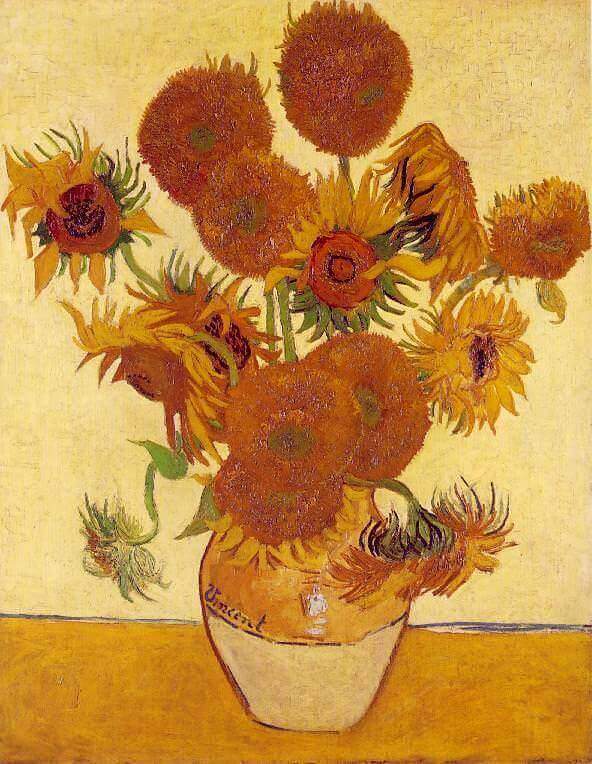
Sunflowers is the title of two series of still life paintings by Vincent Van Gogh. Van Gogh painted the first series of Sunflowers in Paris in 1887. He painted the second series in 1888 while living in Arles, Provence.
Van Gogh created the second series of Sunflowers to greet his friend and fellow impressionist painter Paul Gauguin. As Gauguin was joining Van Gogh in Arles to paint together, he wanted to decorate his guest’s bedroom with these paintings. They did, in fact, paint for several weeks together.
Van Gogh uses beautiful vivid colors and thick paint to add dimension and texture to these paintings.
Vincent Van Gogh Inside The Lume Gallery In Melbourne
Nighttime Cafe Terrace, 1888
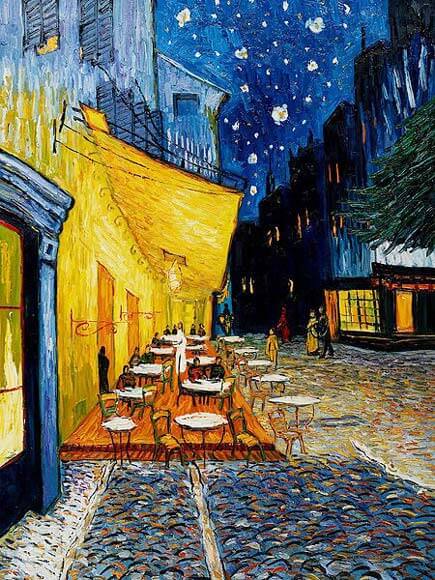
Cafe Terrace at Night was one of Van Gogh’s first paintings after arriving in Arles. The café in Arles is still open today and has been renamed the Cafe Van Gogh. It is a popular tourist destination for Van Gogh fans.
This is one of the most well-known and quoted works of art. Its fame rivals that of Vincent van Gogh’s iconic Sunflowers and Starry Night paintings.
Van Gogh set up his easel outside and painted this scene in the evening. This was a technique he learned from the impressionists in Paris. He did not, however, paint the scene as he saw it, but rather used color and brushwork to express his emotions. Van Gogh depicts excitement and pleasure in this painting.
Surprisingly, Van Gogh never signed this work. However, art historians know that he painted this canvas because of the numerous letters he wrote to his family members about it.
1888, The Bedroom

The title of three versions of this scene painted by Van Gogh is The Bedroom. These works depict Van Gogh’s simple bedroom in Arles’ Yellow House.
The pictures on the wall to the right distinguish the three different versions.
Van Gogh purposefully avoided using perspective rules in this scene. He wanted to give this painting a “flattened” appearance to make it look like a Japanese print.
1889 Irises – famous paintings by Van Gogh
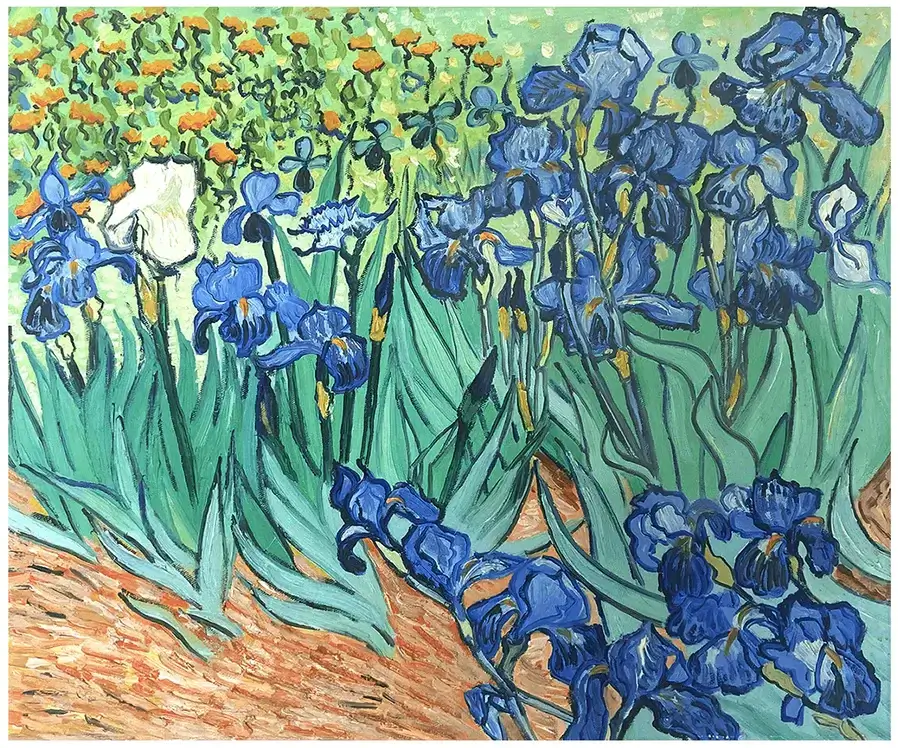
Van Gogh was allowed to visit the gardens while residing in the asylum in Saint-Rémy-de-Provence. He painted many paintings of the hospital gardens, including the Iris paintings.
He sent his Iris paintings to his brother Theo, who quickly entered them into the Société des Artistes Indépendants’ annual exhibition in September 1889, along with another Van Gogh painting, Starry Night Over the Rhone.
Sotheby’s sold this painting for an incredible $53.9 million dollars in 1987 (nearly 100 years later). This was the most ever paid for a painting. The painting was purchased by The J. Paul Getty Museum for an undisclosed sum on March 21, 1990. Art experts estimate that the museum paid between $50 and $70 million.
1890 Wheatfields with Crows
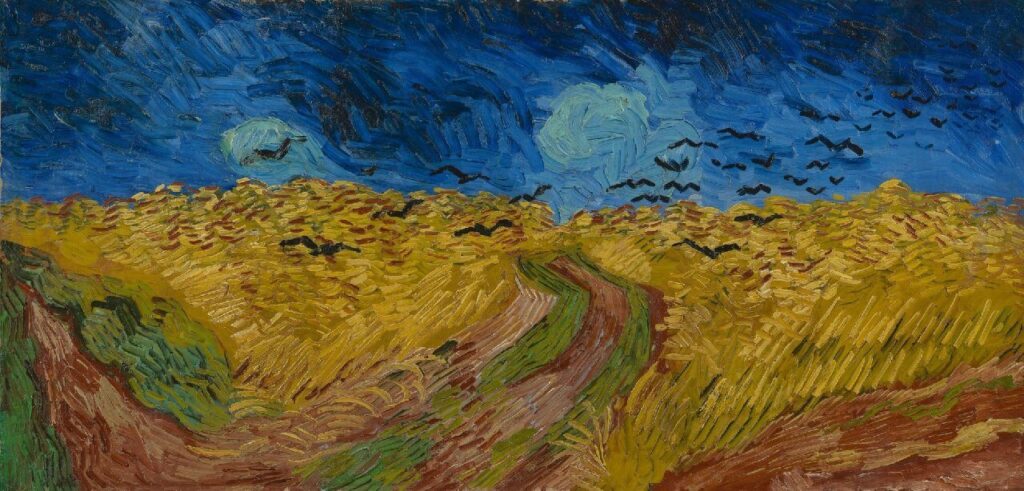
Van Gogh painted Wheatfields With Crows only three weeks before committing suicide. It is now regarded as one of his most dramatic works.
“They are endless wheatfields under a cloudy sky, and I have not shied away from expressing sadness and deep loneliness.” Quote by Vincent van Gogh
Van Gogh painted the wheat fields of Auvers-sur-Oise several times in the last few months of his life. There are several versions of the wheat fields, but this one is the most dramatic.
Wheatfields With Crows can be interpreted in a variety of ways. Were the crows a death symbol? Or is it a symbol of liberty? Van Gogh paints with quick and intense brush strokes. Is he implying that time is of the essence? He depicts stormy skies. Is this a manifestation of his own anguish and despair? In this painting, the paths lead nowhere. Is this a representation of Van Gogh’s sense of not belonging anywhere and of being lost in this world?
This powerful and divisive painting is also regarded as Van Gogh’s “suicide note.” Of course, this is all conjecture. However, just 17 days after the conclusion of Wheatfields With Crows, Vincent shot himself in the chest in the same wheatfield.
1890 Almond Blossom
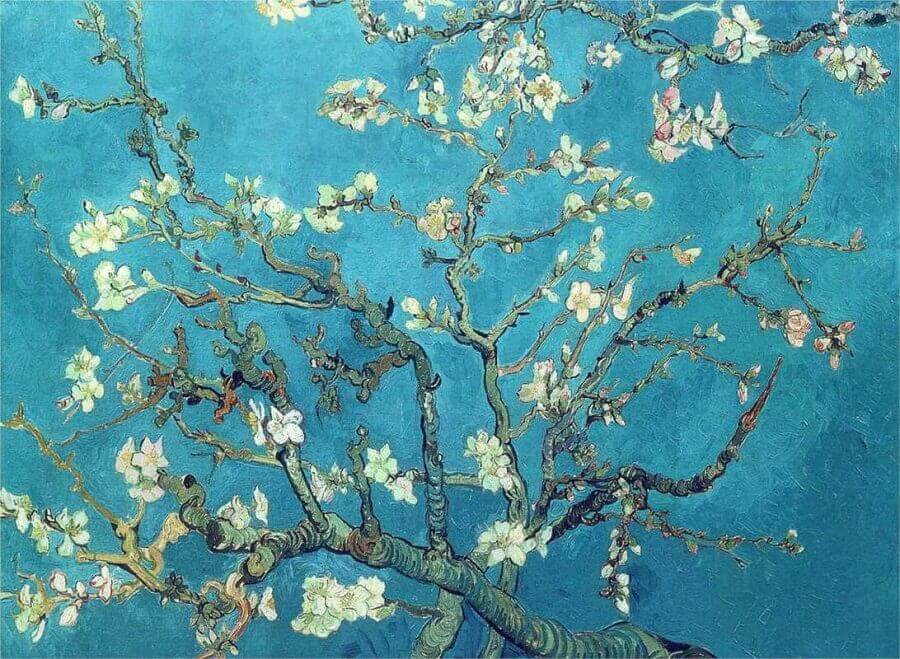
Vincent Van Gogh created the Almond Blossom painting after learning that his brother Theo and his wife, Jo, had just given birth to a baby boy. They were going to name the baby after him.
In a letter to Vincent, Theo wrote the following lovely words:
“As we promised, we’ll name him after you, and I hope he’ll be as determined and courageous as you.”
Vincent was overjoyed with the news. As a gift, he decided to paint an almond blossom painting for them. Almond blossoms represented all things good to Vincent, such as beauty, renewal, optimism, and hope. Vincent was so happy that he painted flowering trees.
Unsurprisingly, the Van Gogh family held the most sentimental value for this Almond Blossom painting.
This lovely painting is now on display at the Van Gogh Museum in Amsterdam.
1890, At Eternity’s Gate – famous paintings by Van Gogh
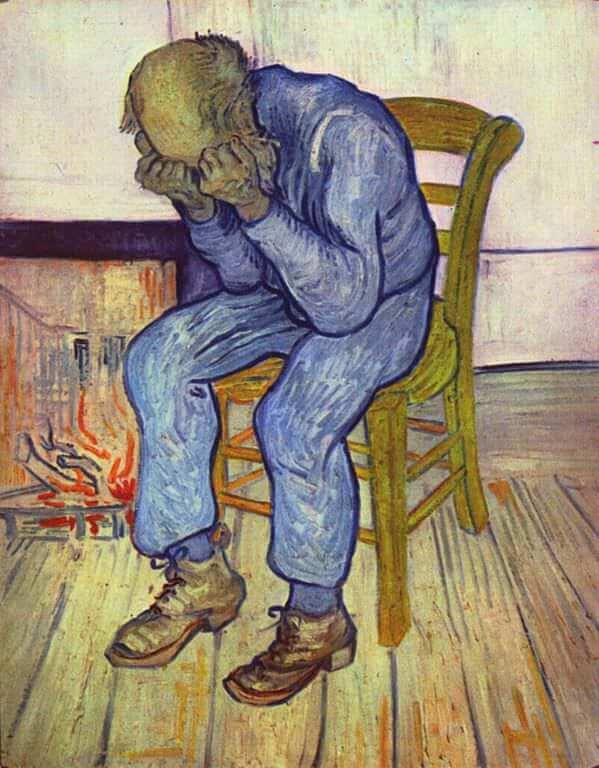
Van Gogh created this’sorrowful’ painting while recuperating from a severe mental breakdown at the asylum in Saint-Rémy de Provence. He based the painting on an earlier lithograph he created.
Although this painting depicts a pensioner and war veteran, you have to wonder if the sadness you feel in it is a reflection of the artist’s own emotional state. However, Vincent titled this painting Eternity’s Gate. This title implies that, despite his difficult periods of depression and inner turmoil, Van Gogh maintained his faith in God and eternity.
This moving painting is on display at the Kröller-Müller Museum in the Netherlands.
Dr. Gachet’s portrait, 1890
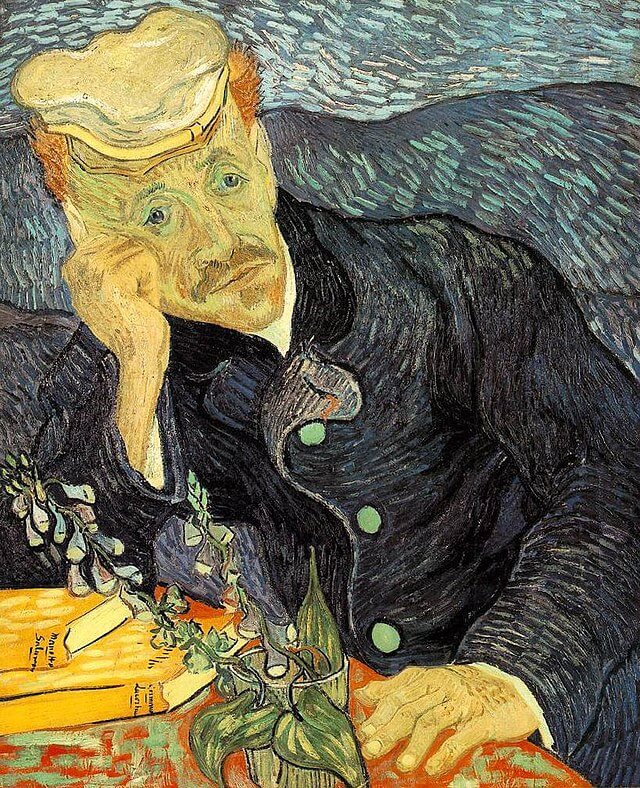
When Vincent Van Gogh left the asylum in Saint-Rémy-de-Provence, his brother, Theo, arranged for him to move to Auvers-sur-Oise and live in the home of Dr. Paul Gachet, a doctor and homeopath. Camille Pissarro recommended this doctor to Theo, stating that he specialized in treating artists.
Dr. Gachet was the subject of three portraits by Van Gogh, including an etching (May 1890) and two paintings (June 1890). He gave Dr. Gachet one copy as a gift. The most famous portrait shows the doctor sitting at a table, his head resting on his right hand. Dr. Gachet has a heartbroken expression on his face.
Van Gogh thought Dr. Gatchet was insane. Vincent writes in a letter to Theo, “he certainly appears to be suffering as seriously as I.”
One of Gachet’s portraits sold for an astounding $82.5 million dollars at an auction in New York in 1890.
Dr. Gachet’s portrait is currently on display at the Musee D’Orsay in Paris. A private art collector owns the second painting.
